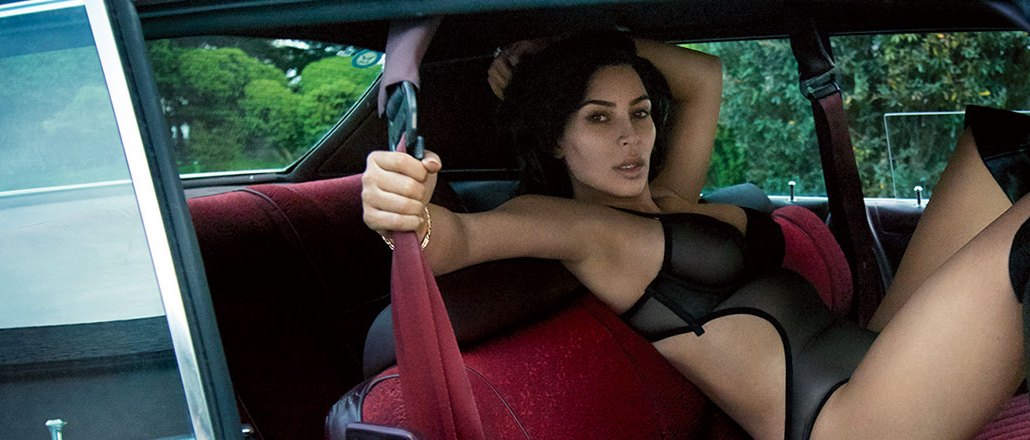
The idea was to create a viral phenomenon.
While the definition of “viral” may be fuzzy, for GQ’s digital and social platforms, its feature story and photo shoot of Kim Kardashian was undeniably so. The celebrity, socialite and businesswoman was responsible for the two biggest days of online traffic in the publication’s history — a million unique views when the story went live on June 16 and more than two million views over 36 hours — and its best month for print subscription sales on the site this year (it wouldn’t provide figures).
“We knew if we shot it right, and launched it right, given Kim’s huge social media presence, we could create a viral phenomenon,” Jim Nelson, GQ’s editor-in-chief said. “And that’s what happened.”
Kardashian’s life is already splashed across all social platforms (she has 46.3 million followers on Twitter, and 75.4 million on Instagram) but GQ’s cover story — written by former Gawker writer Caity Weaver, the photo shoot and cover by Mert Alas and Marcus Piggot, which featured a nude Kardashian holding a strategically placed leather jacket — got people tweeting and sharing.
GQ’s social platforms were flooded with Kardashian content, from Instagram to Twitter and Facebook across a number of days. Its first tweet on the story was retweeted 640 times and ‘liked’ more than 1,400 times; its first Instagram post received 21,600 likes. GQ continued to leverage the story and Kardashian’s social presence by dropping extra photos over time. It released short videos of her explaining her Instagram, and acting out her Kimojis, for example, and it also used Snapchat to show behind-the-scenes at a party with her, almost two weeks later.

This social reaction to a Kardashian magazine story may sound familiar: Paper Magazine released its spread with an oiled-up nude Kardashian with a stated goal to “break the internet” in 2014. It too sent the net into a frenzy and resulted in her being tweeted about more than 200,000 times.
Digiday caught up with GQ editor-in-chief Jim Nelson about its digital strategy for the story, how the content affected the publication’s digital numbers, and how print and digital need to be tackled together. The answers have been slightly edited for clarity.
Why Kim Kardashian?
We were plotting a 10th anniversary edition of our Love, Sex & Madness special issue and we thought, ‘Who is a woman as big as that idea, who represents both female beauty and where we are in the culture?’ And there was only one answer: Kim.
What were the ideas behind the photos?
I knew we wanted to work with Mert and Mercus. I wanted to shoot it like a vintage Helmut Newton shoot and show her like one of those classic’ 60s and ’70s cinematic vixens, like a sort of modern-day Gina Lollobrigida.
How has digital changed how you approach a story like this?
It’s about having plans not just for a cover story or fashion shoot, but having plans and often negotiating with talent for video, Snapchat, Instagram, Twitter and multi-pronged web posts.
So a multi-platform approach?
It means not just creating and inventing content that works differently on different platforms, but being nimble and smart about individual stories, videos, posts. Knowing the right moment and the right way to launch something, then making sure we’re not just posting, but creating maximum engagement.
What was your Instagram strategy for the story?
The number of images and the quality of them gave us an opportunity to push our Instagram strategy further. We orchestrated a rollout of new images every few hours with strong calls to check out more on the site. We saw 360,000 referrals coming through Instagram, a platform almost unanimously known for not generating referral traffic and for the first time, Instagram eclipsed Facebook as our top referrer for this story.
With the rise of digital, do you think print magazines will always exist?
I think they will be with us for a long, long time. I keep arguing that we should make print print-ier, invest in the luxurious and tactile properties of print. Don’t cheapen the paper, or the size. Elevate it, if we can. It’s about the aesthetics and experience of taking it in, and as an industry I don’t think we pay enough attention to that.
That sounds expensive.
I think print magazines need to get more expensive, that the consumers should pay for the distinction. I think the data shows they will. And rising prices is not only fair, it sends a signal that this is a luxury worth paying for.
So digital and print will continue to evolve together?
Let what works in digital work in digital; let what works in print work in print. If a beautifully, complex designed-for-print package doesn’t translate to the web, scrap the web plan.
More in Media

The biggest SEO lessons in 2025 for publishers
KPIs are changing, more AI search data is becoming available, and publishers are looking beyond search to grow their audiences and revenue.

Digiday’s comprehensive guide to what’s in and out for publishers in 2026
Adaptability stopped being a nice-to-have for publishers years ago; it became a survival skill. Here’s a look at Digiday’s guide to what’s in and out for 2026.

Here are the biggest moments in AI for publishers in 2025
Here are some of the moments that defined how publishers adapted to the AI era this year.





